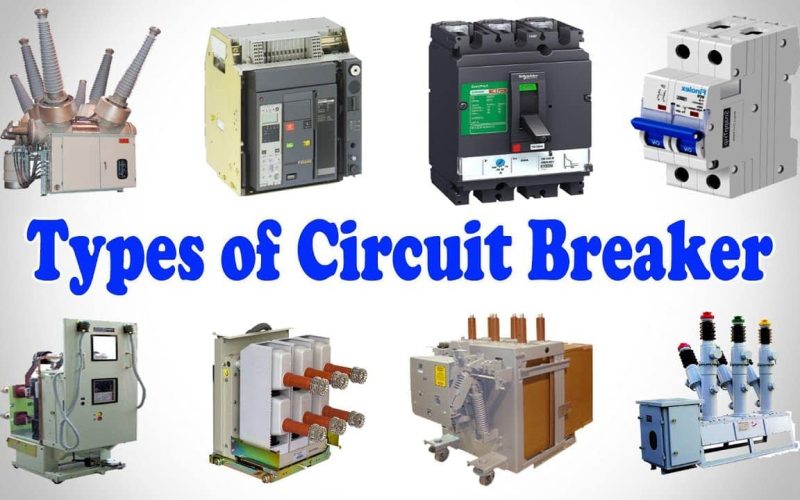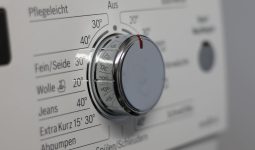Certainly, in our present era, we cannot picture our lives without electricity.
Electricity powers almost everything. Whether it comes from a battery or the mains, we must maintain control over it.
Any electrical malfunction has the potential to be harmful or even fatal. To prevent such risks, we use several protective mechanisms, such as circuit breakers.
Below are the different types of circuit breakers.
1. Insulated-case Circuit Breakers (ICCB)
Insulated-case circuit breakers (ICCBs) resemble MCCBs in appearance. However, they differ because they often use electronic OCPDs instead of thermal-magnetic trip units and have higher short-circuit current ratings.
ICCBs are often used in place of low-voltage power circuit breakers and come in bolt-in and draw-out designs.
ICCBs often feature electronic OCPDs, high short-circuit current ratings, and are less expensive than low-voltage power circuit breakers with equivalent specifications.
2. Dual-function Breakers
Since they can simultaneously guard against arc and ground faults, they provide the same function as AFCI and GFCI breakers.
Eaton, GE, and Siemens were well-known companies that originally produced dual-function breakers.
You may purchase dual-function plug-on neutral breakers for breaker boxes specializing in that particular type.
Due to their simple installation and almost perfect protection against most electrical risks, they are recommended for use in current homes.
3. Molded-case Circuit Breakers (MCCB)
Molded-case circuit breakers (MCCBs) are among the different types of circuit breakers.
Their casing serves as both a support for the internal parts and an insulating component. Thermal-magnetic OCPDs are often built into the casings of MCCBs.
A molded case circuit breaker is constructed as an integrated part in a supporting and enclosing casing of insulating material, per IEEE standard C37.100.
Switch circuit breakers with molded cases, interchangeable trips, and sealed cases are typical MCCB types.
The UL listing of a sealed-case circuit breaker, a type of MCCB, states that it cannot be opened for maintenance or replacement.
The term “sealed-case MCCBs” refers to MCCBs with tar covering the case screws, riveted coverings, or paper seals either on the junction between the two case parts or over the case screws.
Thanks to replaceable trip circuit breakers, the overcurrent unit may be updated whenever necessary. The OCPD rating is limited to 80% of the circuit breaker’s frame rating.
Switching out the rating plug may alter the continuous current rating of electronic interchangeable trip units. The complete trip unit has to be replaced if the replaceable trip unit is electromechanical.
Molded-case switches lack built-in OCPDs but are otherwise equivalent to thermal-magnetic MCCBs. The frame rating is the only rating currently in use.
They are often used in conjunction with motor control centers when another gadget gives protection.
4. Vacuum Circuit Breakers (VCB)
Since they are smaller, lighter, and need much less maintenance than air-magnetic breakers, vacuum breakers (VCBs) are used to replace them. VCBs use self-contained bottles with an internal vacuum to stop arcing.
There is some arcing because the vacuum in the bottles is not perfect.
The vacuum vaporizes a little portion of the contact material, but most evaporated metal reforms onto the contacts.
Single-bottle vacuum circuit breaker technology has a practical limit of 15 kV, but by connecting two bottles in series, voltages as high as 38 kV may be stopped.
5. GFCI Breakers
GFCI breakers are one of the best different types of circuit breakers. Since 1971, when swimming pools and other moist outdoor spaces required them, they have become quite typical in houses.
The specifications were revised in 2020 to include more areas with water, such as bathrooms and kitchens.
They are known as ground fault circuit breakers because they perform similarly to ordinary breakers. They also can guard against ground faults, which are more common in damp settings and may result in electrocution.
6. Air Circuit Breaker (ACB)
An HV oil-less circuit breaker, known as an air circuit breaker (ACB), uses air to extinguish arcs. It is used for short circuit and overcurrent protection up to 15 kV & 800 to 10 K Amps.
It is preferable to an oil circuit breaker due to the lack of flammable oil and the potential for fire hazards.
As you all know, the purpose of a circuit breaker is to safely put out the arc and prevent it from striking again. You must raise the arc voltage to put out the arc.
ACB employs air as a medium to put out the arc. In contrast to other mediums, air may be used to put out an arc by employing techniques like cooling, extending, splitting, and air blasting, among others.
There are two sets of contacts in an ACB: the primary contacts, constructed of copper, and the arcing contacts (made of carbon).
The main contacts are used for the typical electricity supply under normal circumstances.
The main contacts open when there is a fault current, but the arcing contacts stay closed.
The current will flow through the arcing contacts as soon as the main contacts open up. Since there isn’t an arc, the main contacts are secure.
Once the arcing contact opens up, the arc starts to form. The arc cools as it travels upward, extending the arc. As a result, the arc is sent out at zero current.
7. Air-blast Circuit Breakers
Air-blast breakers were among the first types of circuit breakers used with 345 kV and 550 kV systems.
When the contacts open on air-blast circuit breakers, dry, high-pressure air is pushed over the arc.
The high-pressure air sends forth the arc. With this type of circuit breaker, moisture is a constant problem, much more so than with OCBs or gas circuit breakers.
Another problem is leaks related to the usage of high-pressure air systems. The utilities that employed these circuit breakers have mostly phased them out.
8. Oil Circuit Breaker
Oil circuit breakers are one type of circuit breaker that uses oil as a dielectric or insulating material to quench the arc.
One of the first high-voltage circuit breakers, they primarily utilize transformer oil.
These circuit breakers employ oil, which has far superior insulating qualities than air.
Once the contacts split, oil is poured over the CB contacts to quench the arc.
The oil serves as a heat sink for the heat produced by the arc. The distance between the contacts grows as CB breaks its current-carrying contacts within the oil.
Although there is initially very little space between the contacts, the voltage gradient is quite large.
As a result, the oil between the contacts begins to ionize and form an arc.
The oil around the arc is vaporized and heated by the arc, which mostly breaks down into hydrogen gas.
Oil produces nearly ten times as much hydrogen gas in bubbles around the contact area.
The pressure from the oil around the gas bubbles increased the medium’s de-ionization.
The medium’s de-ionization boosts its dielectric strength, quenching the arc at current-voltage zero.
In addition, the cooling action of the gas and oil bubbles aids in the quenching of the arc.
9. Bulk Oil Circuit Breaker (BOCB)
Insulating oil shields the live contacts from the earthed areas of the CB, and this oil circuit breaker uses it to quench the arc.
Such CBs heavily use oil. The insulation oil for BOCB is stored in an iron tank.
The moving and stationary contacts are immersed in oil. When the contacts break, the arc creates heat and gas.
The pressured gas displaces the oil in the tank, where air at the top serves as a cushion. As a result, oil shouldn’t be put in the tank to the top.
Additionally, the tank must be sturdy enough to withstand the pressure the gas releases.
A gas vent is also included to vent the gas outdoors securely. The arc is quenched using the compressed gas heated by the arc’s heat.
The movement of the contacts widens the contacts’ distance, making the arc more resistant.
Once the current crosses the zero crossing, the gas’s cooling impact also contributes to quenching the arc.
10. Gas Breakers
These are known as SF6 (sulfur hexafluoride) gas breakers because they work by using a certain kind of electronegative gas.
They can protect buildings’ electronic wiring from potential lightning damage.
In plain English, they do this by primarily using the abovementioned gas to quench electrical sparks.
Once the fault occurs, the circuit breaker releases SF6, stopping the arc in its tracks.
One of the biggest manufacturers of these circuit breakers is Hitachi and applications for their products are still strong in the US.
High voltage systems are one of the perfect different types of circuit breakers.
11. Vacuum
Like other circuit breakers, these circuit breakers read current ratings.
The primary difference is that the arc will be guided into a vacuum chamber when abnormal electrical conditions develop.
The vacuum has excellent arc-quenching properties; this breaker makes the most of them. They often have a vacant room for it.
They provide various benefits, the most important of which are their small size, quiet operation, absence of fire danger, and extended lifetime.








